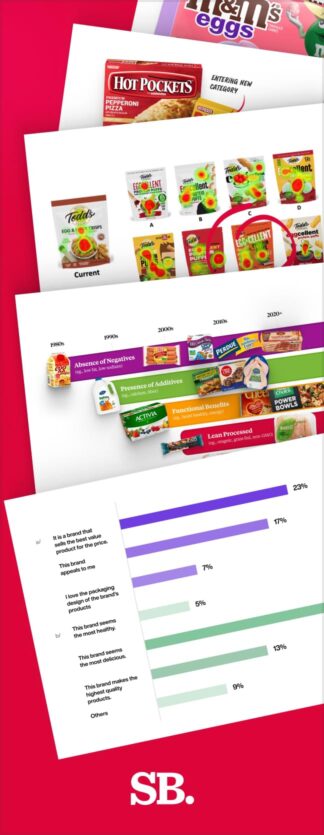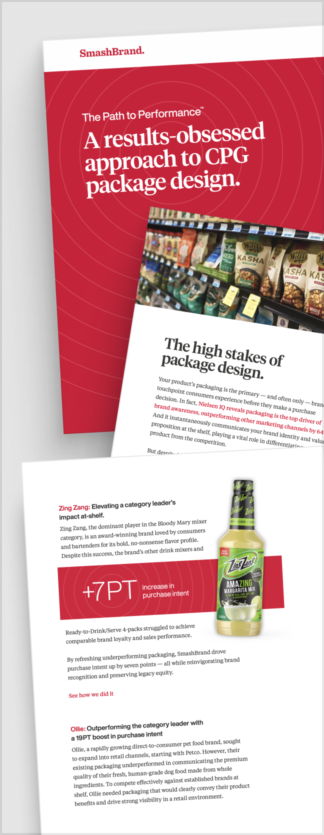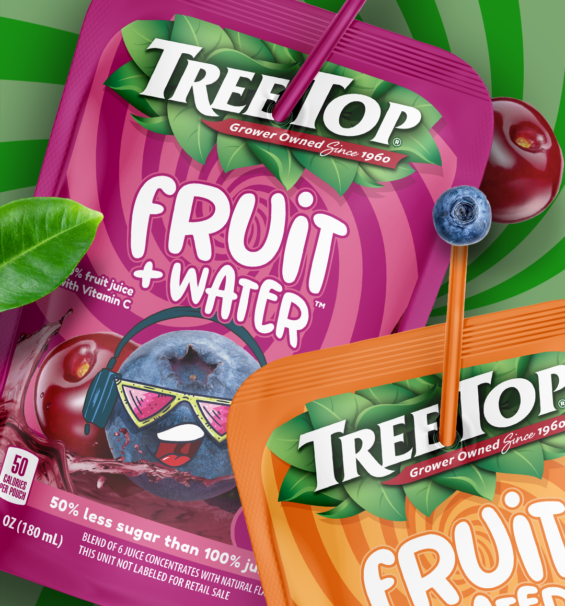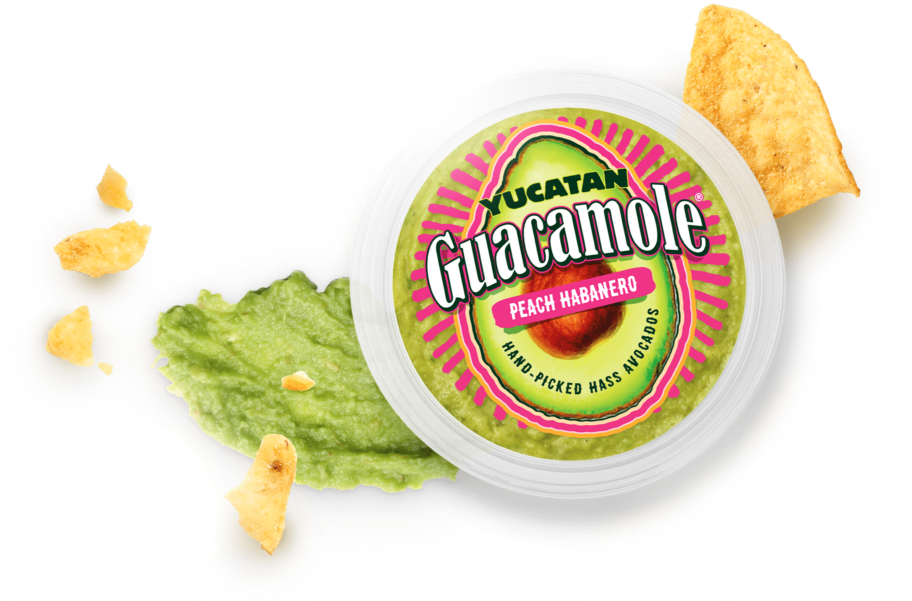Did you know that by the end of 2025, the ready-to-eat meals market alone is expected to top $636 billion in revenue? That’s just one slice of a much larger pie. The Fast Moving Consumer Goods market is massive, constantly in motion, and loaded with opportunities, if you understand what’s inside various FMCG categories.
This article presents a comprehensive list of FMCG products, offering a clear view of the categories that define this sector. Whether you’re building a brand or need clarity, you will find a detailed fast moving consumer goods list organized by category. If you’ve been searching for a reliable FMCG product list or need to become familiar with the most common FMCG product names, you’re in the right place.
Use this FMCG goods list as your go-to reference to navigate the entire shelf.
But what is FMCG?
Fast-moving consumer goods (FMCG) are the everyday essentials that fly off shelves, products with short shelf lives, high turnover, and strong consumer demand. Think dairy products, personal care items, snacks, and household basics. These goods sit at the heart of retail, with FMCG manufacturers and retailers collaborating to maintain tight inventory management and ensure their supply chains operate smoothly.
From raw material sourcing to distribution, success in this space depends on operational precision and serious brand power. High spend on FMCG advertising isn’t about awareness alone; it’s about winning shelf space and driving velocity across every product category.
Unilever is a standout among FMCG manufacturers, with a portfolio that spans a wide range of fast-moving consumer goods (FMCG) items, including cookies, soft drinks, personal care products, and baby food. It’s a real-world case from any list of fast moving consumer goods, showing how diverse and profitable FMCG can be, primarily when supported by innovative private label strategies and strong profit margins.
Categories of FMCG products.
From a brand performance perspective, understanding the types of FMCG products is critical to driving shelf impact and sales velocity. The FMCG categories list encompasses essentials such as food and beverages, personal care, household goods, and over-the-counter health products. Each product category comes with its own pace, price sensitivity, and profit margin potential, which are crucial for both the brand and the retailer.
Robust inventory management ensures availability without overstocking, especially in high-turnover categories. As private label competition grows, brands must deliver more than just functionality; they need brand positioning and packaging that stand out on the shelf. Let’s take a closer look at different categories of FMCG products:
Food and beverages.
Food and beverages remain the most in-demand FMCG categories, touching nearly every consumer, every day. From packaged dinners in the suburbs to energy snacks for alpine hikers, this FMCG category spans a wide range of lifestyles, use cases, and shopping occasions.
Convenience drives the appeal of packaged food, ready-to-eat, easy-to-store products designed to meet the pace of modern life. Effective FMCG packaging design supports both shelf life and shoppability.
- Snacks: From chips and crackers to cookies and nuts, snacks meet real-time needs. Whether impulse buys or pantry staples, they benefit from a smart FMCG pricing strategy and high-visibility FMCG merchandising.
- Soft Drinks & Juices: Non-alcoholic beverages, such as sodas and fruit juices, deliver refreshment, energy, and variety. Juices double as health-focused options or cocktail mixers, showcasing the versatility of beverages in this space. Brands differentiate through flavor innovation and shelf-ready design.
- Dairy: A core segment with high velocity and tight margins. Milk, yogurt, and cheese demand consistent inventory turnover and smart FMCG innovation. Private label has gained traction here, offering quality at scale.
- Meat: Packaged meat delivers on convenience and protein density. Bacon, sausage, and deli cuts lead this segment, where freshness, value, and shelf presence are key. Private-label brands continue to influence the category with affordable, well-branded options.
These products are in demand from all walks of life, from housewives buying food for dinner to tourists going on adventures such as hut to hut hiking in Austria.
Personal care and hygiene products.
This is another dynamic FMCG category, driven by evolving consumer routines and the demand for daily-use essentials. With rapid growth across retail and FMCG e-commerce, this space offers substantial potential for both brand equity and volume. This category includes:
- Toiletries: A staple in every household, toiletries encompass a wide range of personal care products, including soaps, shampoos, shower gels, conditioners, lotions, shaving products, deodorants, and fragrances. Clever FMCG marketing in this category leans into lifestyle relevance, shelf appeal, and daily utility.
- Skincare: A powerhouse segment, skincare is expected to generate over $3 billion in U.S. revenue by 2027. Products range from moisturizers to anti-aging serums, addressing concerns such as acne, dryness, and pigmentation. Success here is fueled by constant FMCG innovations and emotionally resonant FMCG advertising.
- Haircare: Shampoos, conditioners, oils, serums, and styling products all fall into this high-velocity category. Haircare thrives on solutions for frizz, breakage, and dandruff, and benefits from cross-channel branding that spans both retail and direct-to-consumer (DTC) channels.
- Oral Care: Toothpaste, toothbrushes, mouthwash, floss, and whitening kits are essential for maintaining hygiene and promoting overall health. Products in this space win by combining efficacy claims with standout design and clear consumer benefits.
Each subcategory reflects the opportunity to drive growth through targeted messaging, compelling packaging, and a focus on measurable outcomes.
Household cleaning and care.
Clean homes are a priority. That’s why household cleaning and care remains a high-demand FMCG category, continually evolving as new needs emerge. When FMCG market research identifies unmet needs, such as overlooked surfaces, it sparks opportunities for product development and brand growth.
- Laundry Detergents: From liquid to pods, these products are formulated to tackle dirt, stains, and odors efficiently. Innovative packaging design here communicates function, simplifies usage, and reinforces brand trust on a crowded shelf.
- Cleaning Agents: These multi-purpose products keep homes spotless, covering everything from kitchens to bathrooms and beyond. With numerous use cases, strong e-commerce assets, and clear usage cues are essential for both digital and in-store conversions.
- Air Fresheners: Whether in spray, plug-in, or gel form, these products create a fresher indoor environment. Practical brand activation toolkits help extend sensory appeal across retail environments.
- Disinfectants: Critical for hygiene and health, disinfectants reduce the spread of germs across shared surfaces. In this category, performance messaging must be validated and communicated clearly, supported by thoughtful pre-production services to ensure consistency from concept to shelf.
Health and wellness.
Health and wellness are shaped by real consumer needs, ranging from weight management to daily immune support. As concerns over issues like obesity and diabetes rise, brands are doubling down on R&D to deliver innovative, accessible solutions that support everyday health. The opportunity? High demand. The challenge? Standing out in a market saturated with options.
Here’s how each product fits within the fast-moving consumer goods space:
- Over-the-Counter Medicines: OTC products give consumers control and relief for common ailments without a prescription. In a category built on trust, clarity in claims and standout FMCG packaging design are non-negotiable.
- Vitamins & Supplements: From multivitamins to specialty blends, this segment supports nutritional gaps and lifestyle goals. Success here demands data-backed positioning and expert execution from an FMCG brand development firm that understands category nuance and consumer intent.
- CBD: CBD-based wellness products are gaining popularity for their therapeutic benefits without the psychoactive effects. Oils, capsules, creams, and edibles target a range of conditions, from pain relief to stress management. Effective FMCG branding is what moves these products from curiosity to category staple.
- Health Drinks: Protein shakes, herbal teas, and meal replacements continue to thrive as the demand for health-focused convenience options grows. These FMCG products must deliver on functionality, but also need packaging and messaging that stand out in cluttered aisles and online spaces.
Baby & childcare.
Not everything in the baby and childcare aisle is fast-moving, but the essentials are. While products like strollers don’t turn quickly, items such as diapers, wipes, and baby food are used daily, making them key players in the FMCG space.
- Diapers: A true FMCG staple. Whether disposable or cloth, diapers provide comfort and protection—two non-negotiable essentials for parents. Success here depends on clear product benefits, standout packaging, and strong shelf presence.
- Baby Food: From purees and cereals to ready-to-eat meals, baby food is a performance-driven category. It demands precision in formulation and clarity in messaging; parents need to trust what’s inside, fast.
- Baby Wipes: Convenient, gentle, and always in reach. Baby wipes are essential for hygiene on the go. This is a space where brand loyalty is built through consistent product offerings and a tactile packaging experience.
- Baby Skincare: Lotions, oils, shampoos, and soaps are designed to protect sensitive skin. Winning here means striking a balance between safety cues and brand storytelling, and designing packaging that feels both safe and premium.
In this category, it’s not just about what the product does; it’s about how confidently a brand communicates care, trust, and quality at first glance.
Pet care.
Pets are an integral part of families and are treated as family members. Therefore, pet parents and owners always look for products that help keep their pets happy and healthy. Several products fall directly under the FMCG categories within the pet care product line. These include:
- Pet Food: Encompasses food products specifically formulated for pets, including dry and wet food, treats, and snacks. These products cater to pets’ different dietary needs and preferences, providing them with the necessary nutrition.
- Pet Grooming Products: includes various essentials, including shampoos, conditioners, brushes, combs, nail clippers, and dental care products. These products help maintain pets’ hygiene, cleanliness, and overall well-being.
- Pet Accessories: Include collars, leashes, harnesses, beds, toys, clothing, and feeding bowls. These accessories serve functional purposes and contribute to the wellness and entertainment of pets.
Confectionery and chocolates.
Confectionery and chocolates are unique products within the FMCG category, primarily used on special occasions. For instance, people often enjoy sharing sweets and chocolates when they have good news.
- Chocolates: Chocolates are the heart and soul of the confectionery category. They come in various forms, including bars, truffles, pralines, and filled chocolates.
- Candies and Sweets: Candies and sweets are essential in confectionery, ranging from hard candies to gummies, chewy candies, lollipops, marshmallows, and more.
- Gums and Chewing Products: Gums and chewing products are a confectionery subcategory that offers a unique sensory experience. Chewing gums, bubble gums, and chewy candies provide interactive sweetness designed for prolonged chewing.
Tobacco and cigarettes.
Tobacco and cigarettes also fall within the FMCG category, but it is essential to acknowledge that their products have significant health implications. This category includes various products, primarily cigarettes, cigars, and chewing tobacco. Let’s delve into each of these products:
- Cigarettes: Cigarettes are a different product, comprising rolled tobacco enclosed in a paper tube with a filter. They are extensively consumed tobacco products primarily intended for smoking.
- Cigars: Cigars differ from cigarettes in size, shape, and manufacturing process. Cigars are typically larger and hand-rolled with whole tobacco leaves.
- Chewing Tobacco: Chewing tobacco, also known as smokeless tobacco, is used orally rather than smoked. It consists of loose tobacco leaves, finely ground tobacco, or compressed tobacco in various forms.
Alcoholic beverages.
This category thrives on identity. Ingredient selection, production methods, and flavor profiles all shape how alcoholic beverage brands carve out space in a crowded market. It’s not just about taste, it’s about positioning, storytelling, and brilliant execution.
- Beer: A high-velocity product in the FMCG space. Brewed from water, grains, hops, and yeast, beer’s appeal comes from familiarity, refreshment, and variety. Strong packaging and lifestyle-driven branding are crucial for standing out.
- Wine: Made from fermented grapes, wine brings culture and craft to the shelf. Its variety in flavor and form supports broad appeal, but differentiation comes down to packaging, provenance, and emotional connection.
- Spirits: Distilled for higher strength and bolder profiles, spirits offer complexity and exclusivity. The right brand story, supported by premium design cues, is what drives pull in this competitive segment.
Office and school supplies.
Office and school supplies, including pens, pencils, paper, notebooks, and similar products, are consumed regularly, making it one of the hottest FMCG categories, like others. These products offer unique opportunities and challenges within the FMCG sector. Marketers must analyze market trends and plan promotional activities to optimize FMCG sales. The office and school supplies category includes items such as pens, pencils, paper, and notebooks.
Home decor and furnishings.
This FMCG category is quite popular and diverse, offering a range of products with varying pricing strategies. It includes everyday items like candles and air fresheners that are used frequently, presenting both opportunities and challenges within the FMCG sector. Candles nowadays serve both functional and aesthetic purposes, enhancing the ambiance and visual appeal of living spaces.
Care care products.
Car care is a high-utility FMCG category built around performance, protection, and visual appeal. Whether for weekend detailers or everyday drivers, these products help keep vehicles clean, efficient, and showroom-ready.
- Cleaning Products: Soaps, shampoos, and surface-safe cleaners remove dirt, grime, and road debris—essentials for maintaining a polished exterior.
- Polishes & Waxes: Designed to restore and protect, polishes correct surface imperfections while waxes lock in shine and shield paintwork from the elements.
- Detailing Products: Targeted solutions for wheels, chrome, and trim. These are about elevating finish and visual impact, not just function.
- Protective Coatings: Ceramic and paint sealants create long-lasting barriers against UV radiation, acid rain, and contaminants, minimizing long-term damage and the need for maintenance.
- Maintenance Essentials: Engine oils, lubricants, coolants, and additives keep vehicles running smoothly and efficiently.
- Accessories: From microfiber towels to clay bars, accessories amplify product performance and improve the detailing experience.
- Motor Oil: The cornerstone of engine health, motor oil enhances longevity, reduces friction, and maintains consistent performance under pressure.
Sporting goods and fitness products.
Regarding sporting goods and fitness products, FMCG marketing companies must select their target segment based on various factors, including the type of sport or activity, skill level, and demographic characteristics.
This enables customized marketing strategies and product offerings tailored to the targeted segments. Moreover, establishing a solid brand identity and differentiation is crucial for success.
Sports Equipment: Sports equipment comes in a wide variety, with some falling under FMCG and others not. For instance, gym equipment such as dumbbells and bench presses is not commonly purchased. While gym chalk, on the other hand, is consumed regularly.
Gym Gear: Athletes rely on essential gym gear, including bottles, shoes, gloves, and apparel. Workout clothing, such as activewear and sports-specific apparel, is crucial, offering comfort, flexibility, and moisture-wicking properties.
Fitness supplements: Supplements support fitness goals, improve performance, and enhance overall well-being. These include protein powders, pre-workout formulas, post-workout recovery drinks, energy bars, multivitamins, and sports drinks.
Beauty and cosmetics.
This ever-evolving category responds to consumer demands and preferences. Products are tailored to align with FMCG market trends and beauty standards.
To succeed in this field, an FMCG company must thoroughly comprehend the target audience’s demographics, preferences, and purchasing behavior, enabling the development of effective strategies.
In the beauty and cosmetics industry, a robust brand identity is paramount. Here are some products within this FMCG category.
Makeup: Makeup is a prominent and well-known product in this category, produced worldwide with outstanding quality and expertise. It is essential in men’s and women’s fashion and is used regularly.
Perfume: These unique products are essential for hygiene and beauty, providing a fresh scent and boosting confidence. Fragrances, like makeup, are categorized based on their characteristics and quality.
Hair Styling Products: In addition to makeup products and perfumes, hair styling products are also widely used by individuals in the entertainment industry and the general public. Hair styling products include hair conditioners, hair dyes and colors, gel, and styling formulas.
Pharmaceuticals.
Pharmaceutical companies meet healthcare needs, enhance well-being, and prioritize consumer demands.
They research medical trends, demographics, and health concerns to develop targeted products for specific ailments.
This includes a range of medicines and ointments for both internal and external use, including over-the-counter (OTC) and prescription options.
Prescription Medicine: Prescription medicines differ from over-the-counter products as they require a physician’s prescription. They are strictly regulated and can only be obtained from licensed pharmacies or healthcare providers.
The future of FMCG.
The FMCG industry is witnessing significant growth and evolving trends, driven by changing consumer preferences, technological advancements, and the need for innovative strategies.
Let’s discuss the future of FMCG and explore various innovations in this domain, including machine learning, artificial intelligence (AI), and data analytics, and their impact on market research, consumer behavior, and global brands.
Consumer-centric approach.
The future of FMCG revolves around understanding and catering to consumer preferences. With access to vast amounts of consumer data, FMCG companies are increasingly adopting data-driven strategies to gain consumer insights.
These strategies enable the analysis of consumer behavior, buying patterns, and market trends. It allows companies to personalize products, create targeted marketing campaigns, and enhance the consumer experience.
Personalization and customization.
The FMCG industry is embracing the concept of personalization and customization.
By leveraging advanced data analytics techniques, companies can develop personalized product offerings, packaging, and marketing messages tailored to specific consumer segments.
This approach enables brands to form a deeper connection with consumers, thereby fostering brand loyalty and driving increased market share.
Machine learning and AI in supply chain management.
Integrating machine learning and AI technologies in F MCG supply chains brings greater efficiency, cost savings, and improved decision-making.
Predictive analytics and machine learning algorithms help optimize inventory levels, demand forecasting, and supply chain logistics.
AI-powered systems can automate processes, identify bottlenecks, and enhance FMCG merchandising and supply chain visibility and responsiveness.
Sustainability and ethical consumerism.
Environmental concerns have pushed FMCG brands to adopt sustainable practices. The latest technologies enable companies to measure and track their environmental impact, optimize energy consumption, and develop eco-friendly packaging.
Data science techniques can help identify consumer trends and preferences related to ethical sourcing, fair trade, and responsible manufacturing, enabling brands to align their offerings accordingly.
Enhanced market research.
Artificial intelligence (AI) and data analytics have revolutionized market research in the fast-moving consumer goods (FMCG) industry. Traditional methods are being augmented with advanced analytics, sentiment analysis, social listening, and AI-powered surveys to gather real-time consumer feedback and insights.
This enables brands to make informed decisions, iterate product development, and respond quickly to changing consumer preferences and market trends.

Nice Package
Don’t miss out on our monthly newsletter Nice Package!
Each month, we deliver a data-driven newsletter directly to your inbox, unpacking a critical topic in the FMCG & CPG industry.
"*" indicates required fields
Data-driven brand development.
Want a best-selling brand? SmashBrand is a brand development agency for FMCG and CPG companies. From brand strategy to FMCG packaging design testing, our Path To Performance™ process guarantees a retail performance lift. Book a time to discuss your project with our team.

Path to Performance™
Taking a results-obsessed approach to CPG package design.
Discover how SmashBrand’s proprietary process, rooted in scientific principles, informed by data, and validated by your target audience, eliminates the guesswork from package design and delivers guaranteed results.
Subscribe to
Nice Package.
A monthly newsletter that unpacks a critical topic in the FMCG & CPG industry.
Free Resource.

CPG product repositioning guide.
Explore the five undeniable signs your CPG product needs repositioning along with strategies for leveraging consumer insights for a guaranteed market lift.
Learn More About CPG product repositioning guide.

